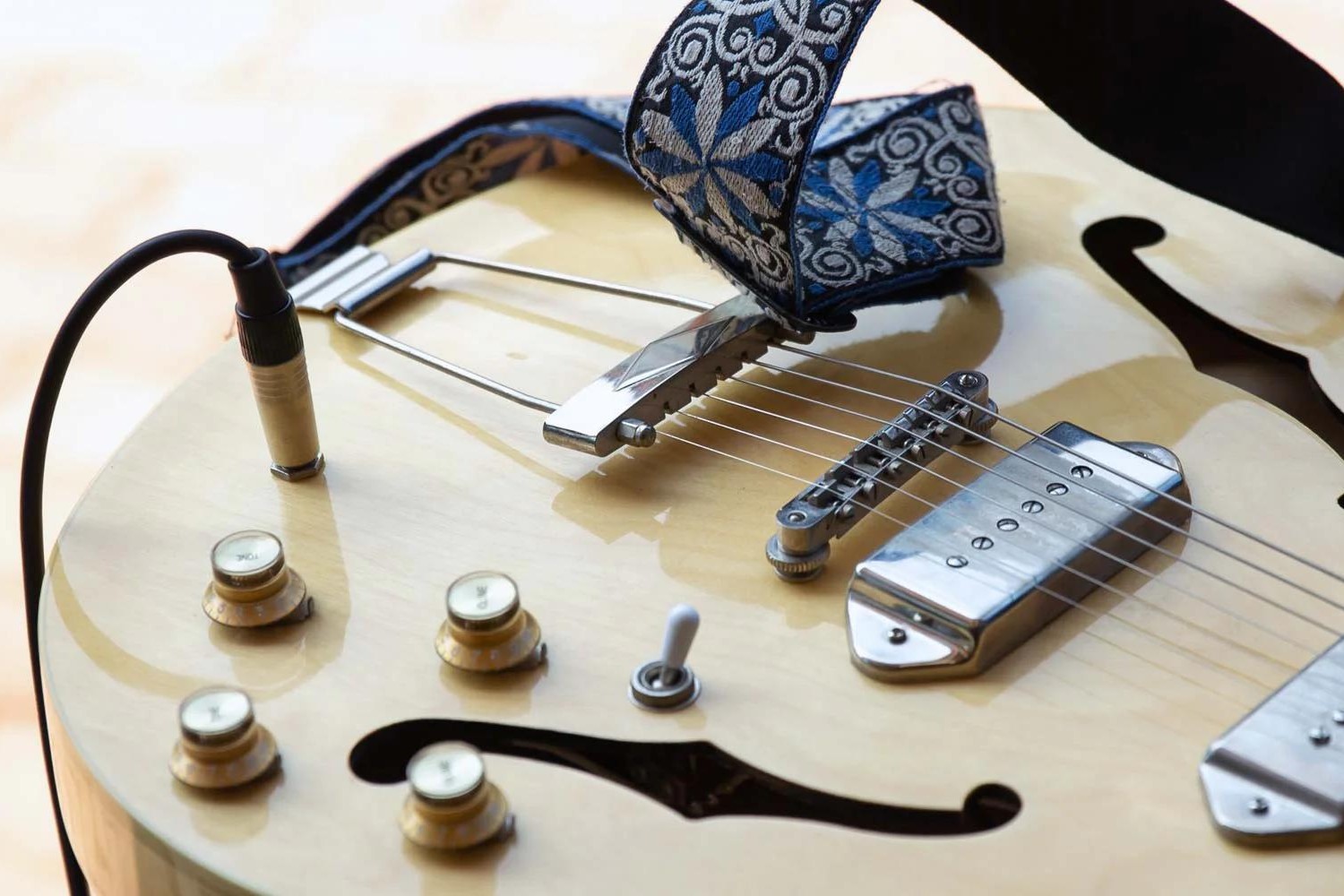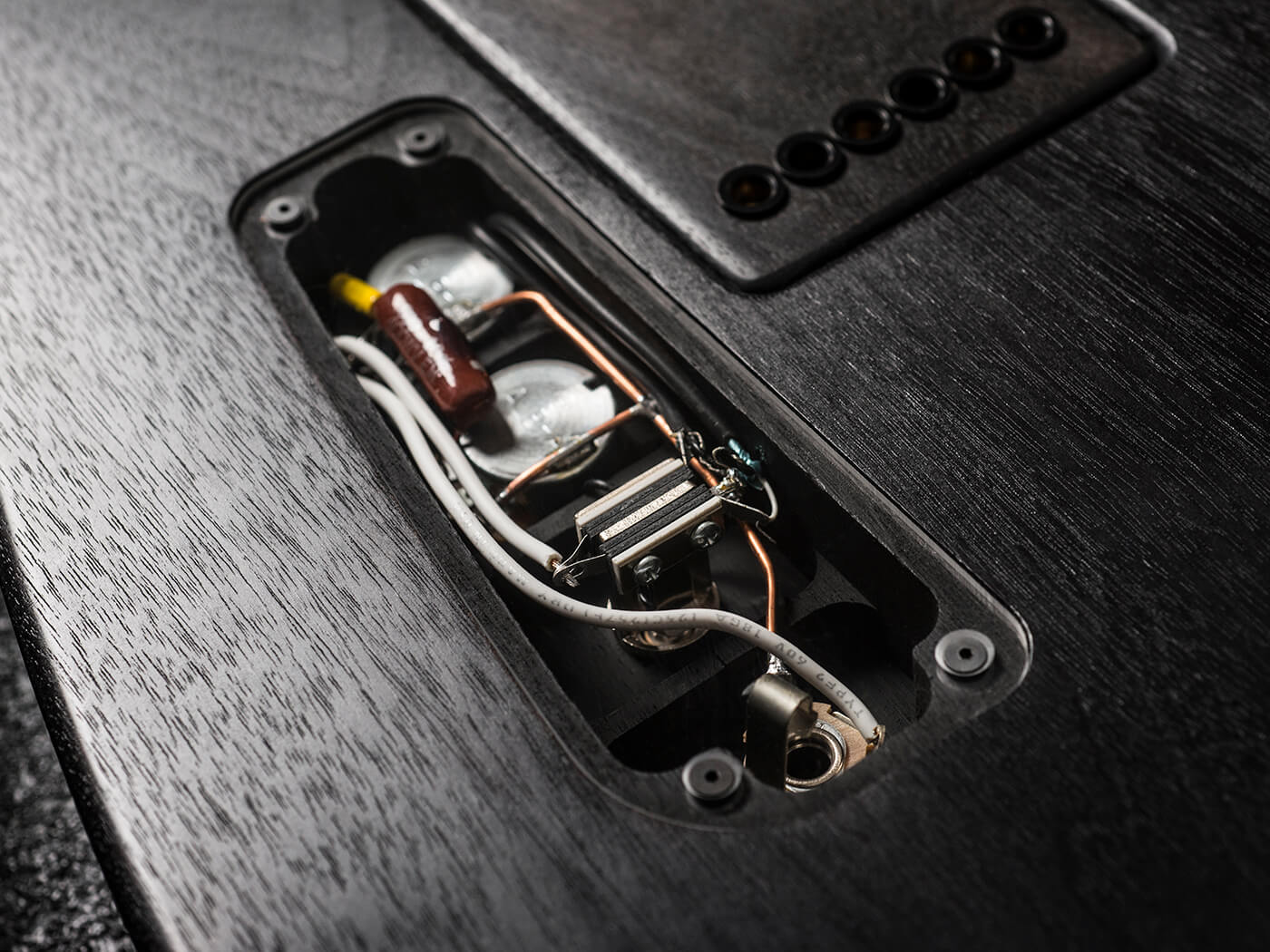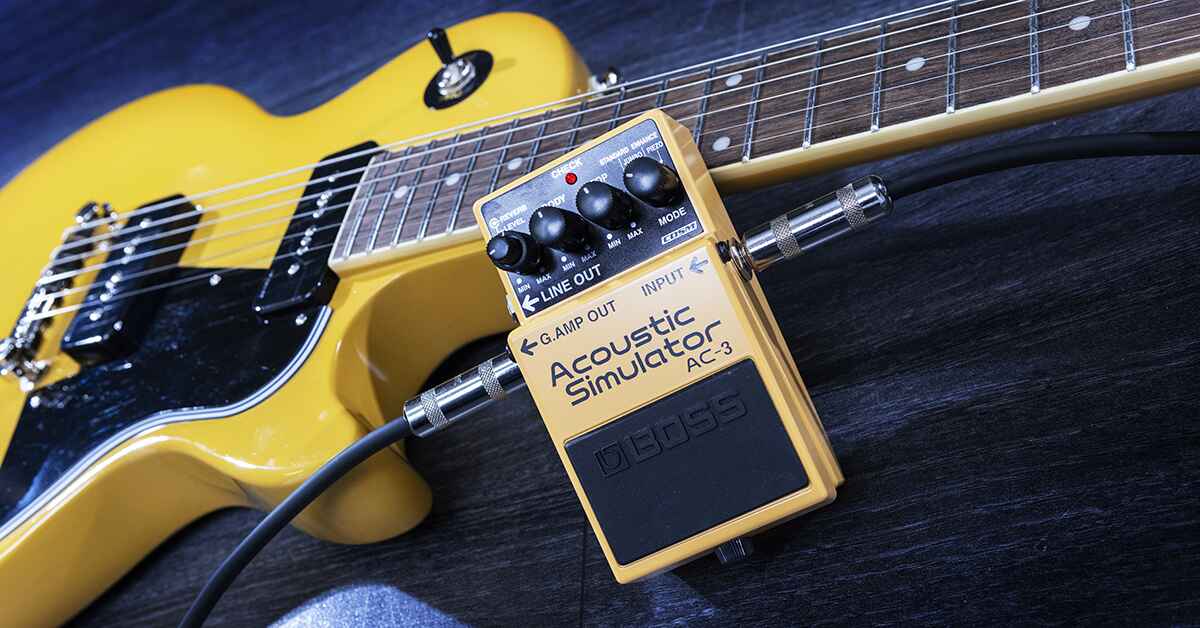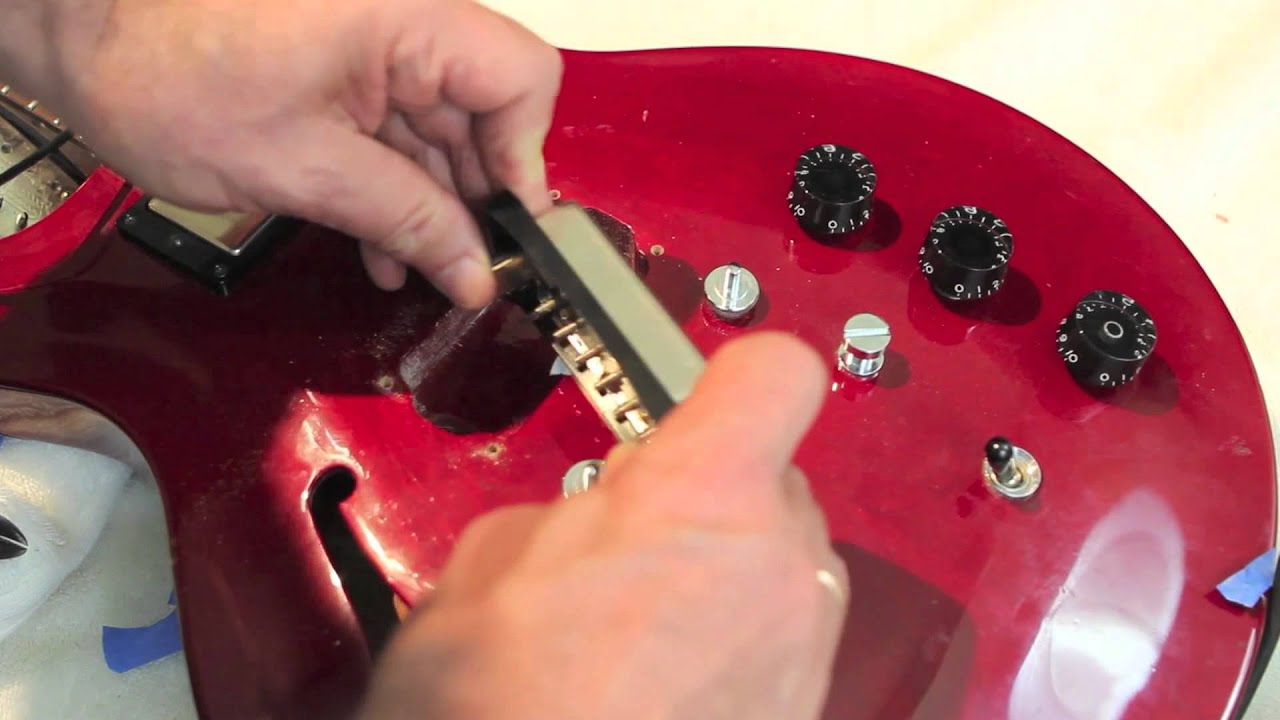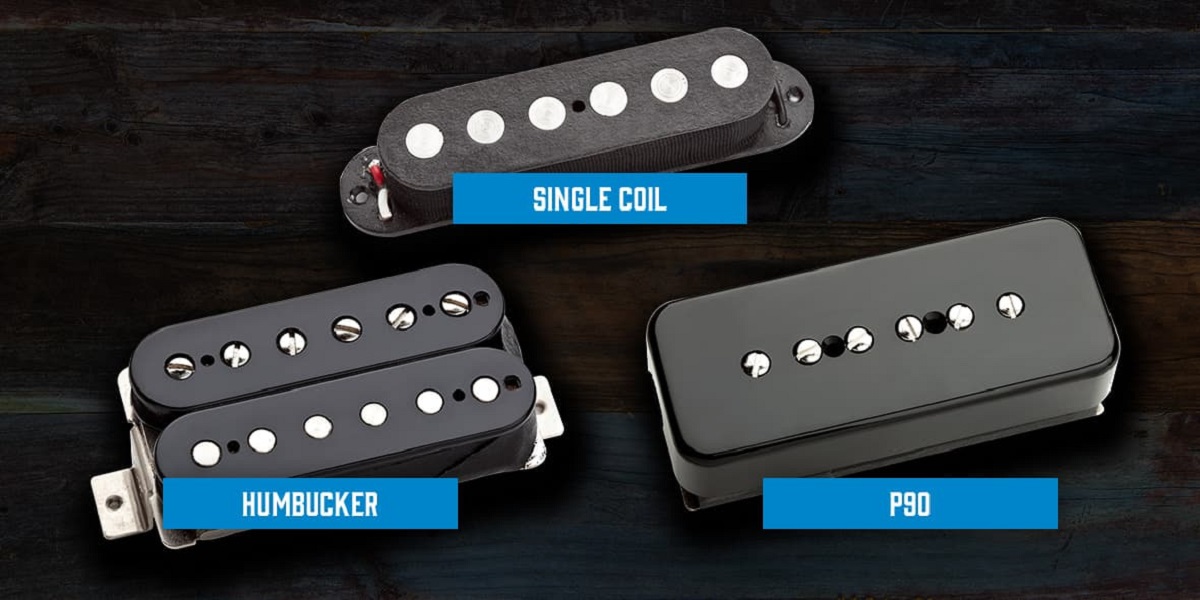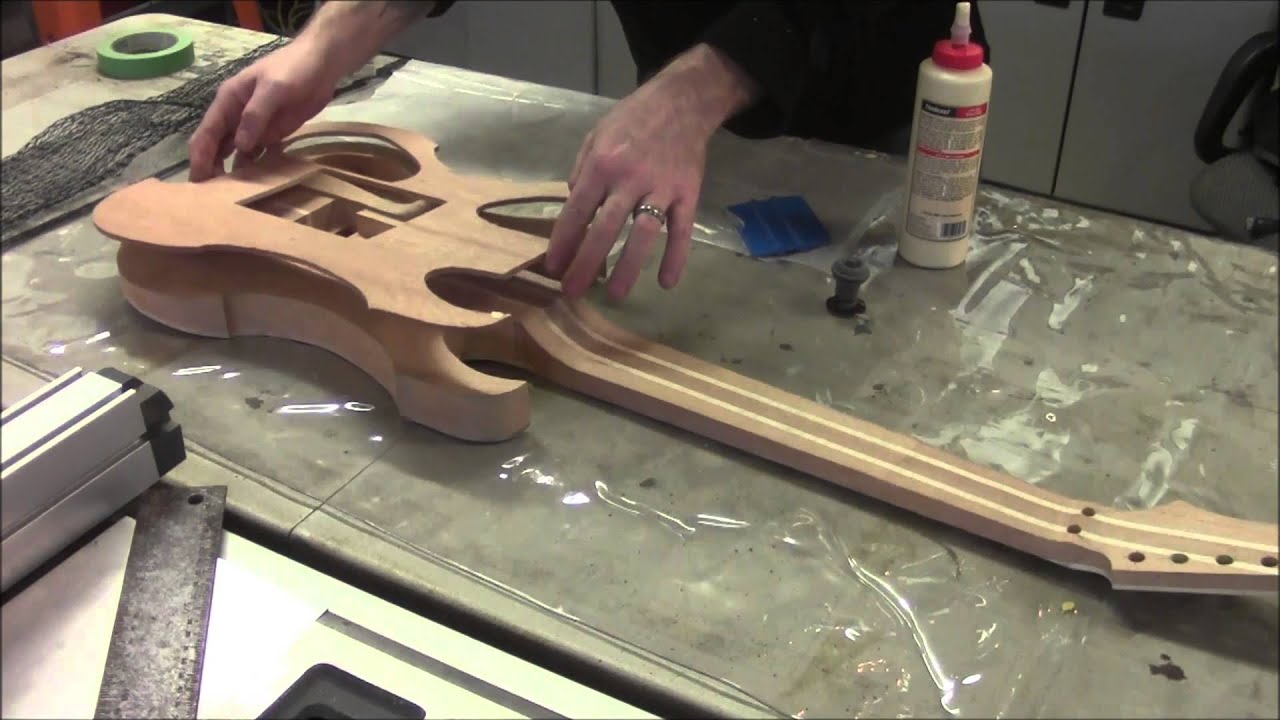Introduction
Welcome to the world of electric guitars, where the nuances of sound are as important as the music itself. As a guitarist, you understand the significance of achieving the perfect tone and maintaining the integrity of your instrument. One crucial aspect of this is ensuring the proper grounding of your electric guitar pickups.
Grounding electric guitar pickups is a fundamental yet often overlooked aspect of maintaining an electric guitar. It plays a pivotal role in reducing unwanted noise, hum, and interference while enhancing the overall sound quality of the instrument. By grounding the pickups effectively, you create a stable electrical reference point, allowing the pickups to function optimally and deliver a clean, clear signal.
In this comprehensive guide, we will delve into the intricacies of grounding electric guitar pickups, exploring the significance of this process and providing you with a detailed, step-by-step approach to achieve proper grounding. Whether you are a seasoned guitarist or a novice enthusiast, understanding and implementing the techniques outlined in this guide will undoubtedly elevate your guitar-playing experience.
So, grab your soldering iron and let's embark on a journey to demystify the art of grounding electric guitar pickups, empowering you to enhance the sonic potential of your beloved instrument.
What Does it Mean to Ground Electric Guitar Pickups?
Grounding electric guitar pickups involves creating an electrical connection between the strings, the guitar’s bridge, and the electronic components within the instrument. This connection serves as a reference point for the electrical signals produced by the pickups, ensuring that any extraneous noise or interference is channeled to the ground, rather than being amplified and disrupting the desired signal.
Essentially, the ground connection acts as a shield, protecting the integrity of the signal produced by the pickups. When the pickups are properly grounded, any electromagnetic interference or electrical noise that the guitar encounters is directed away from the signal path, resulting in a cleaner, more pristine tone.
Furthermore, grounding the pickups also serves as a safety measure, as it helps to prevent electrical shocks to the guitarist. By providing a path for excess electrical current to dissipate harmlessly, the grounding system ensures that the guitarist remains insulated from potentially hazardous electric currents that may inadvertently build up in the guitar’s circuitry.
For the uninitiated, the concept of grounding may seem daunting, but in essence, it is a simple yet critical aspect of ensuring the optimal performance and safety of an electric guitar. By understanding the significance of grounding electric guitar pickups, you equip yourself with the knowledge to maintain the sonic purity of your instrument and safeguard against potential electrical hazards.
Now that we have explored the fundamental concept of grounding electric guitar pickups, let’s delve deeper into the importance of this process and its implications for the overall performance of an electric guitar.
Why is Grounding Important for Electric Guitar Pickups?
Grounding is of paramount importance for electric guitar pickups due to its direct impact on the instrument’s performance and the quality of the sound produced. Proper grounding serves multiple crucial functions that significantly influence the overall functionality and safety of the electric guitar.
First and foremost, grounding electric guitar pickups is essential for minimizing unwanted noise and interference. Without adequate grounding, the pickups are susceptible to electromagnetic interference, which can manifest as a persistent hum or buzzing sound. This interference can detract from the clarity and purity of the guitar’s tone, affecting the overall sound quality and potentially compromising the musician’s performance.
Additionally, effective grounding plays a pivotal role in ensuring the safety of the guitarist. By providing a pathway for excess electrical current to dissipate harmlessly, the grounding system mitigates the risk of electrical shocks that could result from a buildup of stray currents in the guitar’s circuitry. This safety aspect is particularly crucial, especially in live performance settings where the guitarist is exposed to various electrical equipment and potential sources of interference.
Furthermore, grounding the pickups contributes to the stability and reliability of the guitar’s electrical system. By establishing a consistent reference point for the electrical signals, the grounding system helps maintain a steady and predictable flow of current, reducing the likelihood of erratic behavior or signal irregularities that could disrupt the instrument’s performance.
Moreover, proper grounding is integral to achieving optimal signal integrity and preserving the nuances of the guitar’s tonal characteristics. By shielding the pickups from external interference and noise, grounding ensures that the true essence of the instrument’s sound is faithfully conveyed, allowing the guitarist’s artistry to shine through without being overshadowed by extraneous disturbances.
Understanding the significance of grounding electric guitar pickups empowers guitarists to appreciate the critical role that this process plays in shaping the instrument’s sonic identity and ensuring a seamless, reliable performance. With a firm grasp of why grounding is important, we can now proceed to explore the practical steps involved in grounding electric guitar pickups.
How to Ground Electric Guitar Pickups
Grounding electric guitar pickups is a meticulous yet rewarding process that demands attention to detail and precision. By following a systematic approach, you can effectively ground the pickups, ensuring optimal performance and sound quality from your electric guitar. Before delving into the step-by-step guide, it’s essential to familiarize yourself with the tools and materials required for this undertaking.
When embarking on the journey to ground your electric guitar pickups, you will need the following tools and materials:
- Soldering iron
- Solder
- Wire cutters/strippers
- Electrical tape
- Multimeter (for testing)
- Ground wire
With these essential tools at your disposal, you are well-equipped to commence the grounding process. Let’s proceed to the step-by-step guide, which will elucidate the intricacies of grounding electric guitar pickups in a methodical manner.
Step 1: Prepare the Work Area
Begin by creating a clean, well-lit workspace where you can comfortably maneuver and access the internal components of the guitar. This will facilitate a smooth and organized grounding process.
Step 2: Identify the Grounding Points
Locate the grounding points within the guitar, typically associated with the bridge, tailpiece, or tremolo system. These points serve as the connection nodes for the ground wire and are crucial for establishing a reliable ground connection.
Step 3: Solder the Ground Wire
Carefully solder one end of the ground wire to the designated grounding point, ensuring a secure and durable connection. Exercise caution and precision during the soldering process to avoid damaging the guitar’s components.
Step 4: Route the Ground Wire
With the ground wire securely soldered to the grounding point, route it neatly and systematically to the control cavity or designated grounding location within the guitar’s body. Ensure that the wire is adequately insulated and positioned to avoid interference with other components.
Step 5: Secure and Insulate the Connection
Once the ground wire is routed to the designated location, secure the connection and insulate any exposed areas using electrical tape. This step is crucial for safeguarding the integrity of the ground connection and preventing potential electrical hazards.
Step 6: Test the Grounding
Utilize a multimeter to verify the effectiveness of the grounding connection. Check for continuity and ensure that the ground wire is providing a stable reference point for the electrical signals, free from any irregularities or disruptions.
By meticulously following these steps and exercising precision throughout the grounding process, you can effectively ground the electric guitar pickups, fortifying the instrument against unwanted noise and interference while enhancing its overall performance and safety.
Tools and Materials Needed
Grounding electric guitar pickups requires a specific set of tools and materials to ensure a precise and effective process. By assembling the following essential items, you can embark on the grounding endeavor with confidence and proficiency:
- Soldering Iron: A quality soldering iron is indispensable for creating secure and durable connections during the grounding process. It facilitates the precise application of heat to solder, enabling the establishment of reliable electrical connections.
- Solder: High-quality solder is essential for creating strong and enduring bonds between the ground wire and the designated grounding points. The solder should be of suitable composition and thickness to ensure optimal conductivity and reliability.
- Wire Cutters/Strippers: These tools are vital for cutting and stripping the ground wire to the required length and dimensions, enabling seamless integration into the guitar’s internal circuitry.
- Electrical Tape: Electrical tape serves as a crucial insulating and protective material, safeguarding the integrity of the grounding connections and preventing potential electrical hazards. It is utilized to secure and insulate the ground wire and connections within the guitar.
- Multimeter (for Testing): A multimeter is an indispensable testing instrument that allows for the verification of continuity and the assessment of electrical connections. It is utilized to ensure the effectiveness and reliability of the grounding process, providing essential feedback on the integrity of the ground connection.
- Ground Wire: The ground wire, typically made of a conductive material such as copper, serves as the conduit for establishing the grounding connection within the guitar. It is meticulously routed and soldered to the designated grounding points, providing a stable reference point for the electrical signals.
These tools and materials form the foundation of a well-equipped arsenal for grounding electric guitar pickups. By procuring and utilizing these essential items, you can approach the grounding process with confidence, precision, and a commitment to achieving optimal performance and sound quality from your electric guitar.
Step-by-Step Guide to Grounding Electric Guitar Pickups
Grounding electric guitar pickups is a meticulous process that demands attention to detail and precision. By following a systematic approach, you can effectively ground the pickups, ensuring optimal performance and sound quality from your electric guitar. The following step-by-step guide elucidates the intricacies of grounding electric guitar pickups in a methodical manner:
Step 1: Prepare the Work Area
Begin by creating a clean, well-lit workspace where you can comfortably maneuver and access the internal components of the guitar. This will facilitate a smooth and organized grounding process.
Step 2: Identify the Grounding Points
Locate the grounding points within the guitar, typically associated with the bridge, tailpiece, or tremolo system. These points serve as the connection nodes for the ground wire and are crucial for establishing a reliable ground connection.
Step 3: Solder the Ground Wire
Carefully solder one end of the ground wire to the designated grounding point, ensuring a secure and durable connection. Exercise caution and precision during the soldering process to avoid damaging the guitar’s components.
Step 4: Route the Ground Wire
With the ground wire securely soldered to the grounding point, route it neatly and systematically to the control cavity or designated grounding location within the guitar’s body. Ensure that the wire is adequately insulated and positioned to avoid interference with other components.
Step 5: Secure and Insulate the Connection
Once the ground wire is routed to the designated location, secure the connection and insulate any exposed areas using electrical tape. This step is crucial for safeguarding the integrity of the ground connection and preventing potential electrical hazards.
Step 6: Test the Grounding
Utilize a multimeter to verify the effectiveness of the grounding connection. Check for continuity and ensure that the ground wire is providing a stable reference point for the electrical signals, free from any irregularities or disruptions.
By meticulously following these steps and exercising precision throughout the grounding process, you can effectively ground the electric guitar pickups, fortifying the instrument against unwanted noise and interference while enhancing its overall performance and safety.
Testing the Grounding
After completing the grounding process for electric guitar pickups, it is crucial to conduct thorough testing to ensure the effectiveness and reliability of the ground connection. Testing the grounding serves as a critical validation step, providing essential feedback on the integrity of the electrical reference point established within the guitar. The following procedures outline the testing measures to verify the grounding:
Continuity Testing:
Utilize a multimeter set to the continuity testing mode to assess the continuity of the ground wire and its connections. By probing the ground wire and the designated grounding points, you can verify that a consistent and unbroken electrical path exists, ensuring the uninterrupted flow of current and the establishment of a reliable ground reference.
Resistance Measurement:
Measure the resistance across the ground wire and connections using the multimeter. A low resistance reading indicates a robust and efficient ground connection, signifying minimal impedance to the flow of electrical signals and the effective dissipation of extraneous currents. This measurement provides valuable insight into the stability and integrity of the grounding system.
Signal Integrity Assessment:
After verifying the continuity and resistance of the ground connection, it is essential to assess the signal integrity of the guitar. Connect the guitar to an amplifier and listen for any signs of unwanted noise, hum, or interference. A properly grounded guitar will exhibit minimal to no extraneous noise, allowing the true tonal characteristics of the instrument to shine through with clarity and purity.
Dynamic Performance Evaluation:
Play the guitar across a range of playing styles and techniques, paying close attention to the responsiveness and tonal dynamics of the instrument. A well-grounded guitar will exhibit consistent and reliable performance, with no discernible impact from external interference or electrical anomalies. This dynamic evaluation provides a comprehensive assessment of the grounding’s impact on the guitar’s overall performance.
By meticulously conducting these testing procedures, you can ascertain the efficacy of the grounding process and validate the reliability of the ground connection within the electric guitar. Thorough testing ensures that the instrument is equipped to deliver optimal performance, free from the detrimental effects of unwanted noise and interference, thereby enhancing the guitarist’s playing experience and sonic capabilities.
Conclusion
Grounding electric guitar pickups is a fundamental aspect of maintaining an electric guitar’s performance, ensuring optimal sound quality, and safeguarding the guitarist against potential electrical hazards. By understanding the significance of grounding and following a systematic approach, guitarists can effectively ground their pickups, fortifying the instrument against unwanted noise and interference while enhancing its overall performance and safety.
Throughout this guide, we have explored the essential concepts of grounding, delving into the intricacies of the process and providing a comprehensive step-by-step approach to achieve proper grounding. From preparing the work area to testing the grounding, each stage of the process contributes to the establishment of a reliable and effective ground connection within the electric guitar.
Furthermore, the testing measures outlined in this guide serve as critical validation steps, ensuring the integrity and reliability of the ground connection. By conducting continuity testing, resistance measurement, and dynamic performance evaluation, guitarists can verify the effectiveness of the grounding process and validate the stability of the electrical reference point established within the guitar.
Armed with the knowledge and practical insights provided in this guide, guitarists are empowered to maintain the sonic purity of their instruments, elevate their playing experience, and unleash the full potential of their electric guitars. Grounding electric guitar pickups is not merely a technical necessity; it is a foundational element that underpins the artistry and sonic capabilities of the instrument, enabling guitarists to express themselves with clarity, precision, and confidence.
As you embark on the journey to ground your electric guitar pickups, remember that attention to detail, precision, and a commitment to excellence are the cornerstones of this process. By grounding your pickups effectively, you are not only enhancing the sonic potential of your instrument but also embracing the craftsmanship and artistry that define the world of electric guitars.







